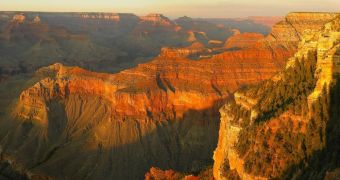According to a new investigation by the United States Geological Survey (USGS), a one-million-acre area around the Grand Canyon contains important reserves of the elusive chemical uranium. The US Department of Interior is currently looking at whether it is worth to segregate this entire area for uranium exploitation, and the latest USGS study was meant at giving policymakers a clue as to what to expect if they start work on this batch of land. The report also gaged the geological, hydrological, and biological consequences of mining uranium in this vulnerable region near the national park.
“The current two year time-out on new uranium mining claims gives us an opportunity to gather the best science and input from the public, Congress, stakeholders, and Tribes on whether to withdraw lands near the Grand Canyon from new mining claims for a longer period of time. The USGS’s report and ongoing research will be helpful to a thoughtful consideration of how to best manage these areas,” explains Ken Salazar, who is the US Secretary of the Interior. The official announced on July 21, 2009, that the DoI will withdraw these lands from the Arizona Strip, so as to assess whether to keep them off mining claims for the next couple of decades.
The issues related to using these lands for uranium exploitation are many and diverse. The US Bureau of Land Management, and the US Forest Service say that the area targeted for mining is a part of the Grand Canyon watershed, and also that massive amounts of environmental and cultural resources are located within it. It was the job of USGS researchers to investigate the possible effects of extracting uranium on these delicate lands. The scientists conducted short-term studies at six separate sites. “The research efforts undertaken by the US Geological Survey will help decision makers better understand how uranium and uranium mining influence the water, soil, and wildlife of the lands surrounding Grand Canyon National Park,” says the USGS Southwest Biological Science Center director, Andrea Alpine.
The USGS survey showed that the targeted patch of land contains about 163,000 tons of uranium oxide. The paper also reveals that large concentrations of uranium and arsenic were detected in waters around other uranium exploitations, suggesting that extracting the element from the land near the national park could see the waters of the Grand Canyon contaminated with these dangerous chemicals. Additionally, more than 100 species of plants and animals were determined to be at risk of suffering ill-effects from uranium exposure, and have their survival, growth and reproduction rates hindered.

 14 DAY TRIAL //
14 DAY TRIAL //